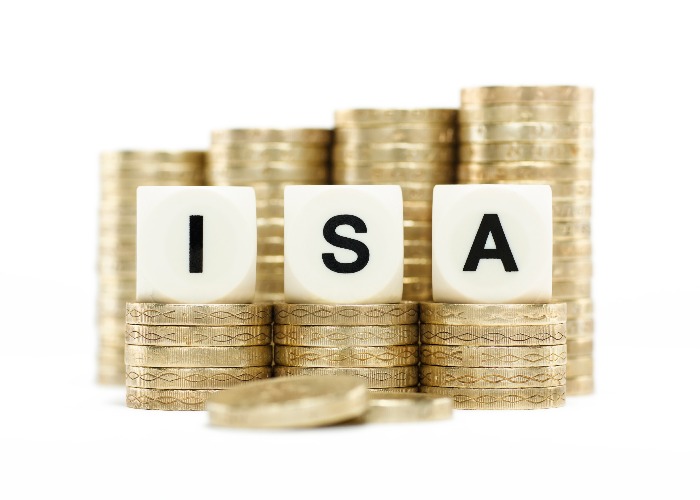ISA changes 2016: Help to Buy, Innovative Finance and passing a tax-free ISA on to your spouse after death

There are some important ISA changes on the way this year that could make you richer. Make sure you're in the know.
It’s a year of big changes for Individual Savings Accounts (ISAs). Savers who want to buy a house, get involved in peer-to-peer investing or who just want more flexibility when it comes to moving their money around are going to find saving a bit easier.
See what's changing and how much better off you could be.
Help to Buy ISA
The new Help to Buy ISA (introduced on 1st December) offers first-time buyers the opportunity to save into a Cash ISA. What's more, the Government will add 25% of the amount saved at the time the property is bought. You can save up to £1,200 in the first month and £200 a month thereafter with the Government adding up to a maximum of £3,000 on £12,000 saved.
Joint homebuyers can get separate accounts and pool their savings, getting up to an extra £6,000 to put towards their first home.
So say you and your partner are both first-time buyers and have both saved £20,000 in separate Help to Buy ISAs to put towards a home. You’ll get £6,000 extra between you, bringing their total saving up to £46,000 which you can put towards a property costing up to £250,000 (£450,000 in London).
The best provider to go with currently is Halifax as it's offering 4% interest on Help to Buy ISAs.
However, you can’t save into a Help to Buy ISA and a Cash ISA in the same tax year unless it’s under a split or umbrella-type ISA scheme.
Danny Cox of Hargreaves Lansdown suggests that for those who want to save over five years or more, running a regular Stocks and Shares ISA alongside will be a "lucrative supplement", although there is a risk you could lose money if the stock markets or share prices fall.
Innovative Finance ISA
Savers who do peer-to-peer investing, where you lend money to other people or businesses via a third party, or crowdfunding will be able to take advantage of tax-free returns thanks to a new Innovative Finance ISA from April.
So if a new saver were to make a monthly contribution of £50 over five years through Lending Works after an initial £2,000 deposit they’d be putting away £5,000 over that time. Add on the forecast tax-free interest of £1,193.26 and that makes a cumulative pot of £6,193.26 after five years.
Even with the top fixed-rate Cash ISA you won't get nearly that much. If you start saving in the UBL Five Year Fixed Rate Cash ISA with a deposit of £2,000 and put in £50 a month for five years, you would earn £5,467.69 on maturity, including £467.69 in interest.
Just remember that although peer-to-peer lending generally has higher returns than traditional ISAs and savings accounts, it is riskier as the chance of default from borrowers is higher and your money isn't covered by the Financial Services Compensation Scheme, which protects up to £75,000 if a financial firm goes under.
Compare top Cash ISAs with loveMONEY
ISA benefits can now be passed on to spouses
ISA tax benefits can now be passed on to a spouse if the original holder dies after 3rd December 2014. Figures say 150,000 married ISA savers pass away each year, but a removal of a flaw in the tax system means their savings can be transferred to spouses.
For example, June has £14,320 in her ISA but she passed away on 3rd January 2016. The tax-free status on her ISA will remain when her widower Jim inherits it on top of his own Cash ISA pot, regardless of the £15,240 limit.
Flexible ISA
From April 2016 savers can withdraw and replace their savings in the same tax year without losing their ISA tax benefits. Savers can cover short-term needs without the long-term damage.
It can also be done on Stocks and Shares ISAs if the provider allows it through a cash trading account.
Let's say that it's August 2016 and Liam has built up £2,000 in his Cash ISA, but has emergency car repairs to make and doesn’t want to take out a loan. He can take some cash out of his Cash ISA but he must replace it by April 2017 to retain the tax-free benefit.
No restrictions on transfers between Investment and Cash ISAs
This year will see more flexibility to balance out ISA savings and investments so now Stocks and Shares ISA can now be transferred to Cash ISAs.
Let's say you have £6,450 in a Stocks and Shares ISA and £7,000 in a Cash ISA. You want a boost to your Cash ISA which would ideally come from your Stocks and Shares ISA as you don’t feel you’re getting very much from it. Now you can transfer the money over to greater suit your needs.
According to investment company Hargreaves Lansdown, 80% of accounts in the 2014/15 tax year were Cash ISAs. Cash ISAs are better for short-term investments while stocks and shares are more suitable for long-term investments if you don't mind the slightly greater risk.
You can read more about stocks and shares ISAs in our Beginner’s guide to Stocks and Shares ISAs.
Maximise your savings:
Where to earn most interest on your cash
How to win more cash from Premium Bonds
Comments
Be the first to comment
Do you want to comment on this article? You need to be signed in for this feature